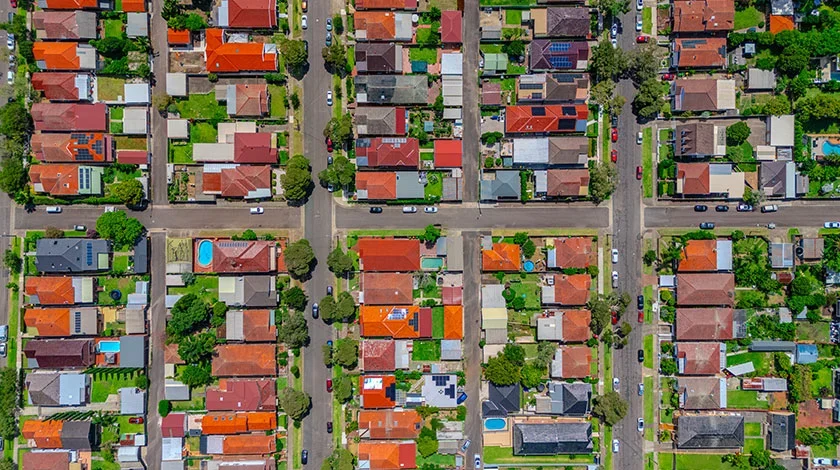Co-authored by Chloe Ferreira
Last year, the NSW Government announced a series of significant Transport Oriented Development (TOD) planning changes, aimed at increasing the housing density across NSW.
A land use planning approach, TOD encourages sustainable and mixed-use development located around railway or metro stations. The ultimate aim is to create vibrant and walkable communities. While there is a staggered timetable to implementation in the relevant identified areas, there is the potential for 138,000 additional dwellings – with a major impact on both residential and commercial property.
Key features of Transport Oriented Development include:
- The blending of residential, commercial and recreational spaces to provide greater access to amenities.
- More efficient land use through more concentrated housing.
- Promotion of public transport as the most convenient mode of transport through increased accessibility.
Centred around transport hubs, eight high priority zones have been identified for accelerated rezoning. The NSW Government has committed to $520 million investment for community infrastructure with the rezoning coming into effect on 27 November 2025 for the following areas:
The masterplans and rezoning around these areas will have the capacity to provide nearly 60,000 homes and more than 126,000 commercial and retail jobs. This includes spaces for schools, health services, public parks and Special Entertainment Precincts.
The masterplans also establish a 3% affordable housing rate in perpetuity across all sites, with further affordable housing rates of up to 18% across key sites within the precincts. This TOD Program will be the first time in NSW that a Government has introduced inclusionary zoning for affordable housing in perpetuity.
The eighth zone, Bays West, will have a different timeline due to work resolving harbour and port uses as part of the rezoning process.
In addition to these precincts, another 37 stations have been highlighted for change and higher density planning.
New planning controls
The changes and reforms to planning controls are all outlined in:
- State Environmental Planning Policy (Housing) Amendment (Transport Oriented Development) 2024; and
- Environmental Planning and Assessment Amendment (Transport Oriented Development) Regulation 2024.
The new planning controls as part of the reforms include:
- Permissibility: Allowing flat buildings in residential/local centre zones and shop top housing in commercial zones.
- Height: 22m height for residential flat buildings, 24m height for buildings containing shop top housing (maximum height).
- Floor space ratio: Specifications around the maximum floor space ratio, lot size/width and street frontages.
- A minimum lot width of 21m.
- Consideration of active street frontages.
- No changes to heritage clauses – applications still need to be made to council. Any changes need to improve and enhance the heritage values.
- 2% mandatory affordable housing in addition to existing affordable housing measures. This percentage is set to increase over time.
Where a lot contains multiple zones, TOD controls will only apply to the portion in the relevant zone. The Transport Oriented Development planning controls commenced on 13 May 2024 and now apply to a total of 29 precincts. The remaining locations will have new planning controls rolled out progressively in 2025.
The 37 additional precincts subject to the rules include:
Central Sydney:
- Ashfield, Croydon, Dulwich Hill, Marrickville (Inner West councils);
- Banksia, Kogarah, Rockdale and Turrella (Bayside/Georges River councils);
- Berala, Lidcombe (Cumberland Council);
- Belmore, Canterbury, Lakemba, Punchbowl, Wiley Park (Canterbury Bankstown Council); and
- North Strathfield metro (Canady Bay Council).
Northern Sydney:
- Gordon, Killara, Linfield and Roseville stations (Ku-ring-gai Council).
Western Sydney:
- St Marys (Penrith City Council).
Central Coast:
- Gosford, Tuggerah, Woy Woy and Wyong stations (Central Coast Council);
- Adamstown, Hamilton, Kotara and Newcastle Interchange stations (Newcastle City Council);
- Booragul, Cardiff, Cockle Creek, Morisset and Teralba (Lake Macquarie City Council); and
- Corrimal, Dapto, North Wollongong station (Wollongong City Council).
To find out if your home fits within the new policy, check the maps here adopted by the Housing SEPP.
What does it mean for you?
The TOD changes are likely to make the impacted areas very appealing to developers. Already we are seeing (and acting for) groups of homeowners either being approached by developers to acquire their properties at a premium or forming and taking their properties to market as collective offerings.
If you own land within the impacted areas, you may find yourself in a position where the value of your land and that of your neighbours has significantly increased. If you would like more information about the TOD changes or to discuss a group sale offering, please contact Coleman Greig’s Property Law team.
Like to read more? Read our Plain English Guide to Selling your Property with your Neighbours to a Developer.














